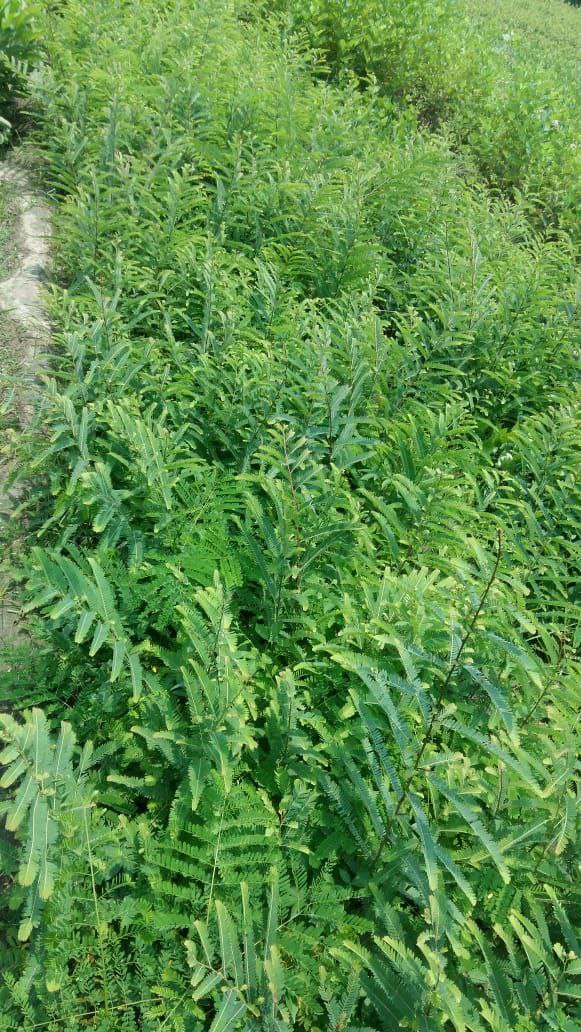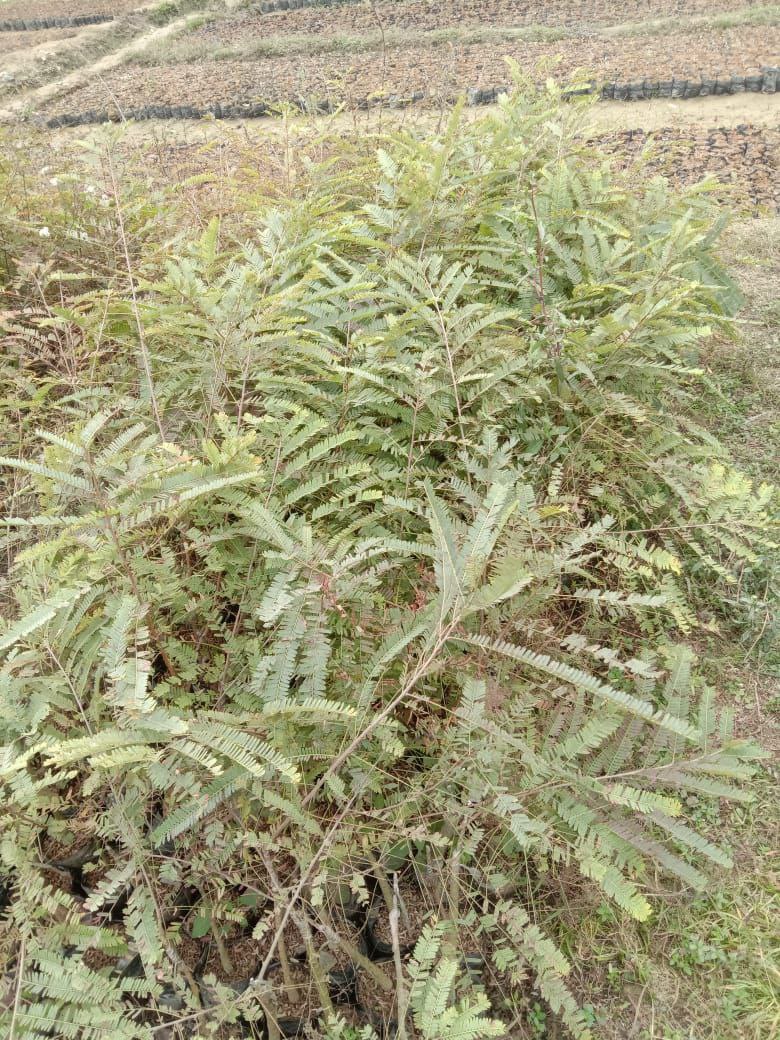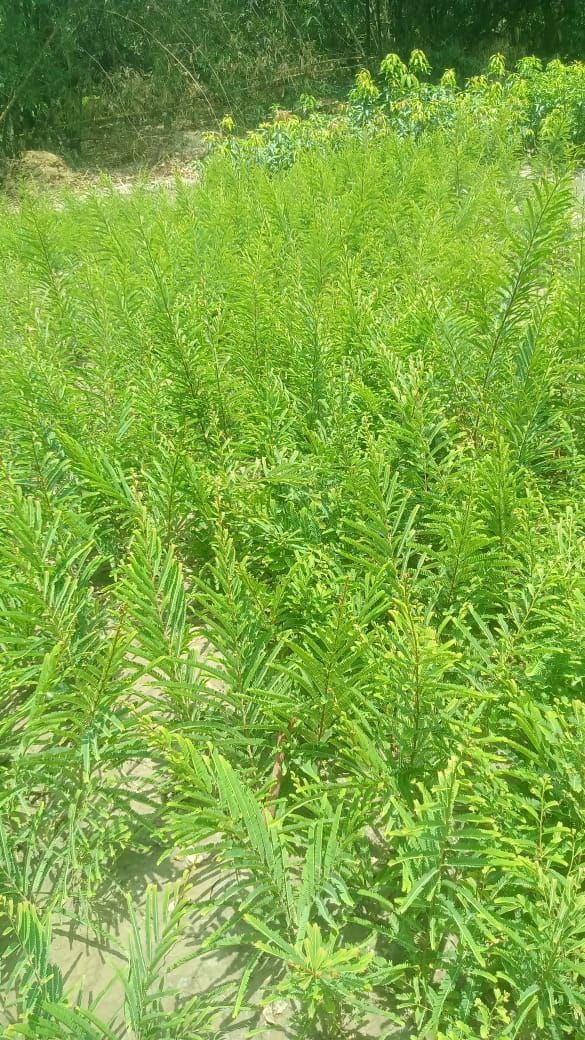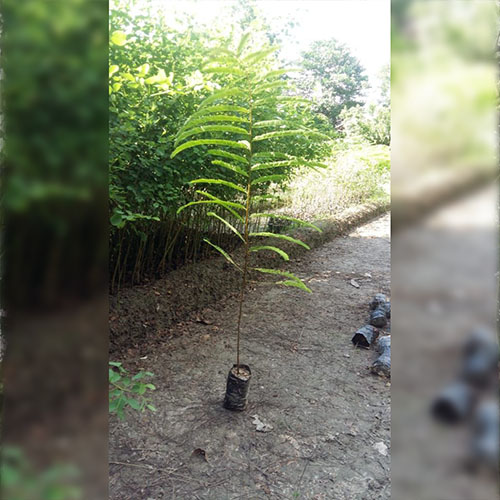Red Amla Plants
Red Amla plants are a unique variety of the Indian gooseberry (Phyllanthus emblica), known for their distinct red or reddish-pink fruits. This variety is less common than the traditional green amla but is gaining popularity due to its unique appearance, high nutritional content, and potential health benefits.
Key Characteristics of Red Amla Plants
-
Fruit Appearance:
- The fruits of the Red Amla plant are notable for their reddish or pinkish hue, which differentiates them from the typical green varieties.
- The fruits are medium-sized, round, and have a smooth, shiny surface similar to other amla varieties.
-
Flavor and Nutritional Value:
- Red Amla fruits have a similar astringent and sour taste to traditional green amla but may have a slightly different flavor profile due to the pigmentation.
- Like other amla varieties, Red Amla is rich in vitamin C, antioxidants, polyphenols, and other beneficial nutrients. These nutrients are associated with various health benefits, including boosting immunity, improving digestion, and promoting skin and hair health.
-
Tree Size and Growth Habits:
- The Red Amla tree is similar in size to other amla varieties, growing up to 8-10 meters (26-33 feet) in height.
- It has a spreading canopy with light green, feathery foliage that provides good shade.
-
Flowers and Fruiting:
- The tree produces small, greenish-yellow flowers in clusters during the spring season.
- Fruits typically mature and are ready for harvest 6 to 8 months after flowering, often ripening in the late autumn or early winter.
Growing Red Amla Plants
-
Climate Requirements:
- Red Amla plants thrive in subtropical and tropical climates and are hardy, withstanding a range of temperatures from 0°C to 45°C (32°F to 113°F).
- They prefer a dry climate with a distinct monsoon period, which helps synchronize the flowering and fruiting cycle.
-
Soil Preferences:
- The plants grow well in well-drained loamy or sandy soils with a pH range of 6 to 8. While they can tolerate poor soil conditions, they perform best in fertile soils with good organic content.
- Proper drainage is crucial to prevent waterlogging and root rot, especially in regions with heavy rainfall.
-
Sunlight:
- Full sunlight is essential for the healthy growth and fruiting of Red Amla trees. Ensure the plants receive at least 6-8 hours of direct sunlight each day to maximize photosynthesis and fruit production.
-
Watering:
- Young Red Amla plants need regular watering to establish a strong root system, but once mature, they are relatively drought-tolerant and require less frequent watering.
- Watering should be adjusted based on the soil type and climate conditions, avoiding excessive watering to prevent waterlogging.
-
Fertilization:
- Apply organic compost or well-rotted manure at the time of planting and annually as a top dressing to maintain soil fertility.
- Use a balanced fertilizer, particularly during the pre-flowering stage and after harvest, to support growth and fruit production.
-
Pruning and Maintenance:
- Regular pruning is essential to maintain the tree's shape, remove dead or diseased branches, and promote better air circulation and light penetration.
- Pruning also helps in managing the tree's height, making it easier to harvest the fruits and preventing branches from breaking under heavy fruit loads.
-
Pest and Disease Management:
- Red Amla plants, like other varieties, are generally resistant to many pests and diseases but can still be affected by common problems like aphids, caterpillars, and fruit flies.
- Implement integrated pest management (IPM) strategies, including regular monitoring, using organic pesticides like neem oil, and encouraging natural predators to manage pest populations.
- Ensure proper air circulation and avoid overwatering to prevent fungal diseases such as powdery mildew and root rot.
Propagation
- Grafting and Budding: Red Amla is commonly propagated through grafting or budding to ensure that the new plants retain the desirable characteristics of the parent tree, such as fruit color, size, and quality.
- Seed Propagation: Seed propagation is possible but less preferred because seedlings may not retain the unique red fruit characteristic and other desirable traits of the parent tree.
Care Tips
- Mulching: Use mulch around the base of the tree to conserve soil moisture, regulate soil temperature, and suppress weeds. Organic mulches also decompose over time, improving soil fertility.
- Spacing: Plant Red Amla trees about 20 to 25 feet apart to provide ample space for growth and ensure good air circulation, reducing the risk of diseases.
- Harvesting: Harvest Red Amla fruits when they are fully mature and have developed their characteristic red color. The fruits should be firm and free from blemishes or damage.
Benefits of Red Amla Plants
- Unique Appearance: The red color of the fruits makes Red Amla a unique variety, adding visual appeal to the harvest and potentially offering a different flavor profile for consumers.
- Nutritional and Medicinal Value: Like other amla varieties, Red Amla is rich in vitamin C, antioxidants, and polyphenols, which are beneficial for overall health and wellness.
- Versatility: Red Amla fruits can be used in a variety of culinary applications, including fresh consumption, juices, pickles, candies, and traditional Ayurvedic medicine.
By following these guidelines and providing proper care, you can successfully cultivate Red Amla plants, enjoying their unique fruits and the health benefits they offer.





